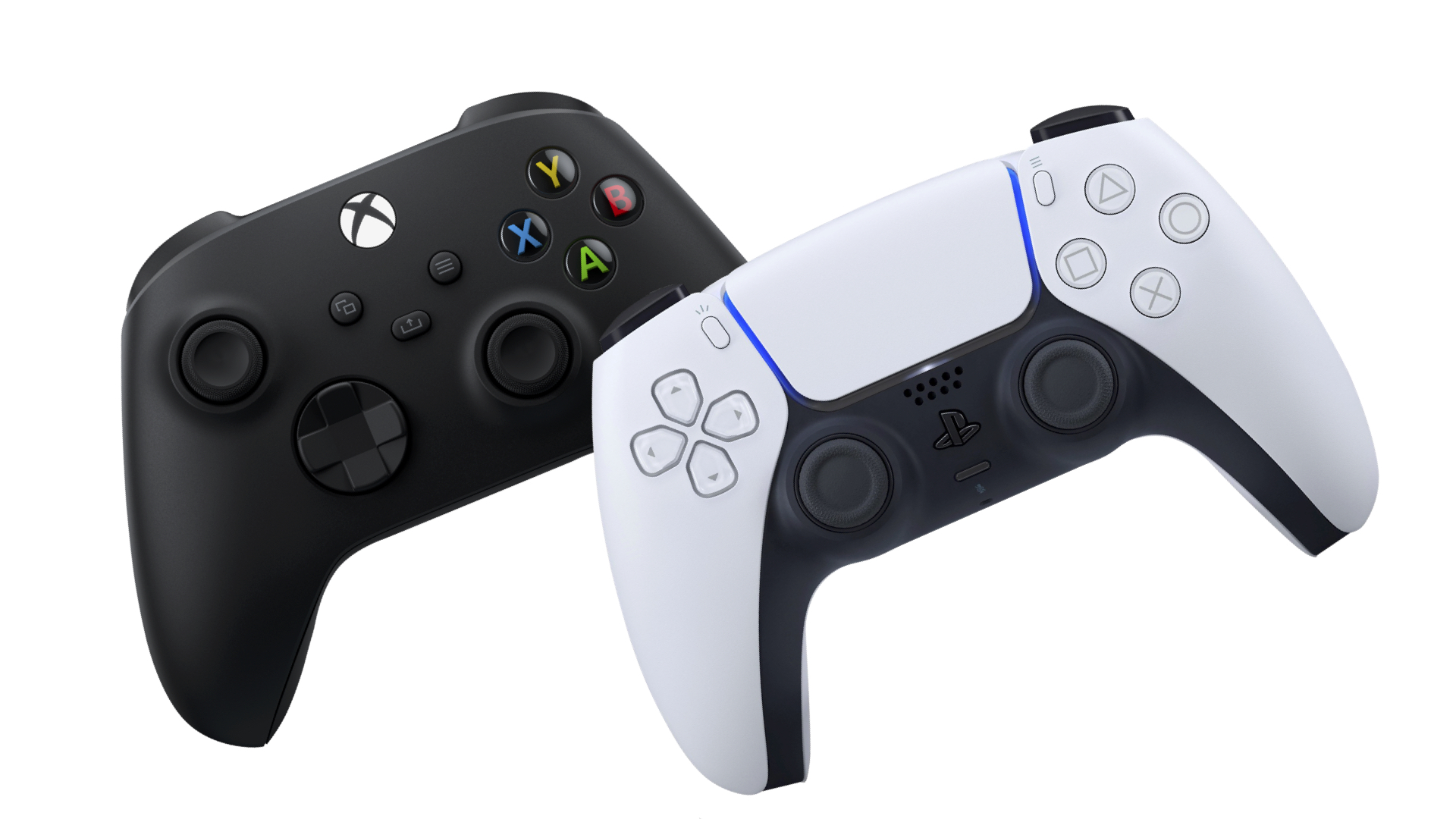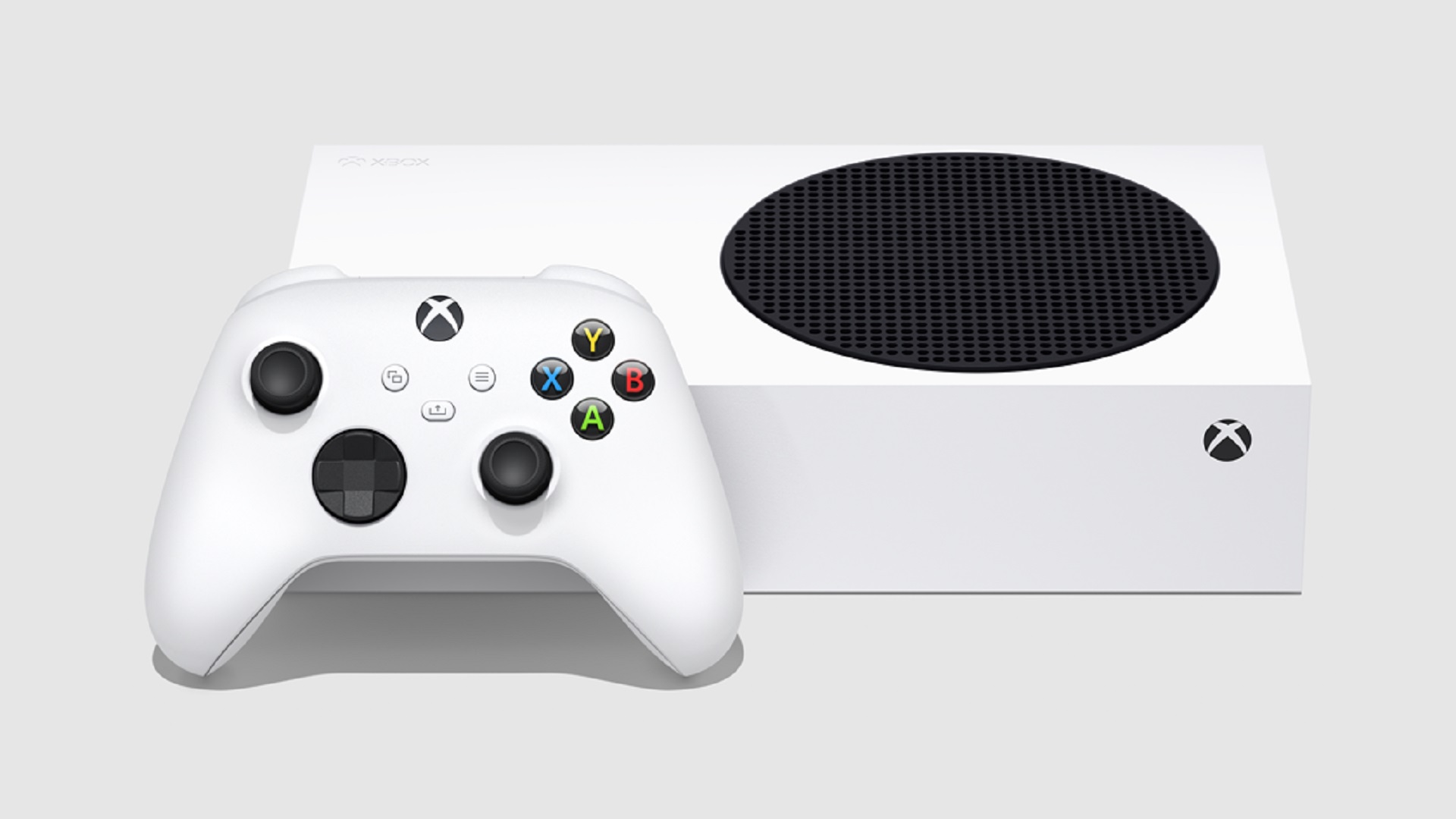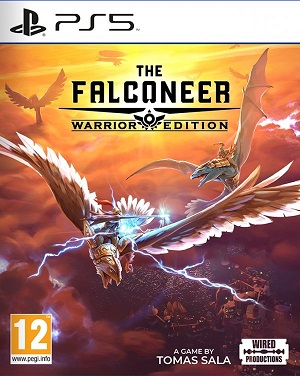
With Unity being one of the most widely used game development engines in the industry, the people behind it are in a unique and interesting position with regards to next-gen. But with the Unity engine also being one that’s been picked up more and more often by as increasingly expanding indie development scene in the industry, their perspective on how things with next-gen and with indies in the coming years are going to proceed becomes even more intriguing.
Meanwhile, another impressive indie feat that was built on Unity was the recently released Xbox Series X/S launch game, The Falconeer, which, incredibly enough, was developed entirely by one man, Tomas Sala. To speak more about that, about the future of indies, and about the course of the industry in the coming years, we recently shot across some of our questions to Sala and to Unity’s chief product officer and industry veteran Brett Bibby. You can read our extensive conversation below.
"Thanks to tools like our High Definition Render Pipeline (HDRP) and our growing support for ray-tracing, combined with our close collaborative partnerships with console makers, Unity developers have had the ability to consider next-gen projects for some time now. "
First, we would like to ask you how uptake of Unity has been for next generation consoles. It feels like there a fair few games using Unity available at launch. Would you be able to speak to its adoption amongst developers for next generation machines?
Brett Bibby (Chief Product Officer, Unity): Thanks to tools like our High Definition Render Pipeline (HDRP) and our growing support for ray-tracing, combined with our close collaborative partnerships with console makers, Unity developers have had the ability to consider next-gen projects for some time now. The Falconeer is a great example of this, and takes advantage of nearly everything the Xbox Series X has to offer. Over on the PS5, The Pathless is seeing similar acclaim.
Beyond big next-gen debuts though, what we’re really seeing today is a milestone in cross-generational releases. Indie games that have accrued success on earlier platforms – such as Overcooked, Yes, Your Grace, and Ori and the Will of the Wisps – are all able to reach a new audience day and date when these new consoles ship. For indie studios, this is a huge opportunity.
As a one man team for a whole game, the choice of engine can be paramount. What were the reasons you chose to develop The Falconeer with Unity?
Tomas Sala (Developer, The Falconeer): Unity is really flexible, and it can be molded to how my own personal pipeline is set up. As The Falconeer takes a different technical approach to art than most games, eschewing pre-generated textures, having that flexibility is key. I’ve been making projects in Unity for nearly a decade, so for The Falconeer, I had plenty of experience to know what Unity would be capable of.
What in your opinion are the features that endear Unity to so many independent game developers?
Sala: Again, for me, that flexibility is key. I’ve also found that Unity is very approachable. I have a background in visual art, not programming — but unlike some other paths to entering game development, my lack of prior knowledge didn’t create an impossible roadblock.
Bibby: By developing games in the Unity environment, creators can build once and deploy anywhere. This is something that is appealing to all creators, but is especially beneficial for smaller studios whose resources might otherwise prevent them from porting to new platforms and reaching a new audience. The difference between success and failure can come down to wide platform support and finding your audience on the platform they’re on. What we’re seeing today, with the strong Made With Unity launch line-up on day one for next-gen consoles, is a testament to that.
The Falconeer runs at a staggering 120FPS on Xbox Series X, a feat made even more impressive given the fact that you developed the entire game by yourself. How much help was Unity in helping you achieve this framerate?
Sala: I think it’s a mixture here of two things; the Xbox Series X/S are really great machines, and I’m a huge fan of the S – what this thing can do for such a small box, at the price point is incredible. The second element here, is the ease of creating and testing via unity. The engine allows me to imagine my world and simply play with settings to create that performance profile. Honestly, it only to a few days to get the game running at a really impressive resolution and framerate tailored for a new device.
Given that most major systems released in the last few years have launched with Unity support, it sounds like you guys get involved in the development timeline pretty early. Is it the platform holders who approach you to port Unity to their systems and facilitate wider development, or do you have to reach out to them?
Bibby: We have ongoing collaborative relationships with platform holders spanning many years. We tend to start talking together early in the design of a new platform, sharing information, trends, insights, opinions, experience, etc. and there is a natural progression of that conversation to supporting new platforms, working with early developers and ultimately supporting a platform’s launch titles.
"Unity is really flexible, and it can be molded to how my own personal pipeline is set up. As The Falconeer takes a different technical approach to art than most games, eschewing pre-generated textures, having that flexibility is key."
Indie game productions have gotten more and more impressive over the last few years. There are indie games that are so incredibly high quality and well made that they stand toe to toe with, and indeed, in a lot of cases, even exceed, major high budget AAA games. What kind of further advancements and progress do you think we will see with indie games in the coming generation, technologically speaking?
Bibby: Through platforms like Unity, we’ve seen a real democratization of tools for development. Things that were once out of reach without massive teams and astronomical budgets are now entirely within the realm of possibility for a solo creator working independently. As we work through this generation, I think we’re only going to see this parity in technical quality get even greater, as more indies explore and adapt to the tools that are now available to them. We’re also seeing a shift from the tools themselves to what you can do with them. As screen density increases the sheer amount of content needed is an intractable problem if you can’t leverage that technology to assist artists in creating content through more artist friendly tools combined with AI and machine learning techniques to accelerate workflows. This is especially true for small teams.
Sala: There’s lots of things developers will want to do graphically, but I think the major benefit in this generation is two-fold. Framerate is going to be less of an issue, as we now have powerful enough CPUs to deal with intensive work, where the previous generation, they were a little underpowered as the generation drew to a close. Unity allows me to still deliver a great experience at 60fps on Xbox One. Secondly, there will be a lot less smoke and mirrors. If I want to create a constantly running system across the world, previously, I might have had to trigger it at certain points, but now I can just create the system and let it go. This will lead to more detail worlds, better AI and ultimately, more believable worlds, because the tricks we used in the past aren’t needed.
Continuing on from the previous question, what role do you think will indie games play on the Xbox Series X and PlayStation 5?
Bibby: Indie games have become one of the cornerstones of gaming culture over the last two decades, and there’s every reason to believe that we’ll see this blossoming continue on next-gen consoles. Indie developers push creative boundaries and innovate in ways that larger, established studios don’t. All three major platform holders put a lot of time and emphasis on building relationships with smaller companies to help shine a light on the great experiences that are being created, and with new distribution models like Game Pass out there, players now have even more opportunities to find their new favorite indie gems.
Sala: I think we’ve seen, even more so in recent years, AAA titles will deliver that blockbuster appeal, while indie titles will showcase unique experiences that the big games wouldn’t dream of trying. Not because the developers aren’t talented, or they don’t want to, but because they have a commercial checklist within their projected development. X feature exposes us to this audience, and Y allows us to go wider within this demographic. Ultimately, myself and many other indie developers dream of this game we’d like to make, and as long as we enjoy making them, and people enjoy playing them, that’s what matters, and that’s what we’ll make.
What have been some indie games in recent years that have impressed you the most?
Bibby: Innovative and interesting experiences like The Falconeer always capture my attention. There’s so many great games made by our community. Lately I’ve been playing Among Us and Fall Guys.
In a world of democratized game development, and millions of aspiring developers hoping to reach billions of players, across so many different platforms and technologies, how does Unity prioritize which systems it will support? How do you decide what you work on first?
Bibby: Internally one of our core values is being Users First. We look at the platform and how it will benefit creators using Unity and ensure we support the platforms that will enable their success.
The Falconeer features pretty vast open spaces that players can traverse through at really high speeds. Rapid streaming of data in open world games, and really, just open world games in general, have proven to be a technical challenge to even many AAA developers. How much work, then, was the impressive design of The Falconeer for you? How much help did Unity prove to be in this process?
Sala: I think Unity gave me the chance to work with geometry and not textures, which means a lot of what I’m pushing to a screen is just maths, so specifically, it nullifies the need to stream gigabytes of data – effectively, the entire game is loaded into memory, so there’s no need to stream data. Now that is a really strange approach, but it works. And in that lies the magic of something like Unity3d. It’s literally where there is a will there is a way, and if you are smart you can create those open worlds. Of course there is no replacement for 300 people working on minute detail. But leveraging all that performance with an engine that accepts radically different solutions does level the playing field in really cool new ways.
"Through platforms like Unity, we’ve seen a real democratization of tools for development. Things that were once out of reach without massive teams and astronomical budgets are now entirely within the realm of possibility for a solo creator working independently."
What kind of role do you think initiatives like Smart Delivery (and their equivalent on other platforms) have for indie games in the coming generation? Do you imagine these will prove to be popular, and available through the course of the generation? Or is this one of those things that fizzles out shortly after launch?
Sala: Making games playable across generations is a great way to extend the life of a game – especially if it’s one that keeps players engaged with seasonal content or ongoing updates. Smart Delivery is an especially clever way to do this, as it lets creators deliver an optimized version of their game to whichever platform a player prefers.
Bibby: Giving players more options to play is always a winning move. Smart Delivery on Xbox is a great example, no doubt extending the life of many Xbox Ones that would otherwise be sitting in a closet once replaced. And by using the PS4 to stream PS5 play, Sony is creating a similar opportunity for their audience. Games have long ago left that “niche” feel behind them; they’re something everybody does. The changes we’re seeing this generation really reflect this, providing more opportunities to play what you want when you want – and wherever you want.
In your opinion, what still needs to be done to make development of video games more accessible and democratized than ever before?
Bibby: We believe the world is a better place with more creators in it – and creativity can and should come from anyone, anywhere. We focus the power of our talent, technology and grants to empower anyone to foster a more sustainable and inclusive world.
Change happens when all voices are heard. That’s why we’re investing time, money and resources into making Unity education more accessible, creating economic opportunities for underrepresented creators, and maximizing the impact that their work has on local communities and the world.
Since the reveal of the PS5 and Xbox Series X’s specs, a lot of comparisons have been made between the GPU speeds of the two consoles’ GPUs, with the PS5 at 10.28 TFLOPS and the Xbox Series X at 12 TFLOPS- but how much of an impact on development do you think that difference will have?
Bibby: Since Moore’s Law has given out, performance is largely determined by how data oriented your content is and how well you can process that data in parallel. The best experiences will be had when the code and content work together like a symphony, and Unity continues to invest heavily in providing creators with an underlying engine that lets them take advantage of everything a console has to offer.
The PS5 features an incredibly fast SSD with 5.5GB/s raw bandwidth. This is faster than anything that is available out there. How can developers take advantage of this? How does this compare to Series X’s 2.4GB/s raw ?
Bibby: The theory is that the SSD speed may be the differentiator this generation because it allows developers to not have to worry about how to fit all their content into main memory because it can be streamed on demand per frame. It will take some time for developers to learn the right balance and how to organize their content, but we are seeing the dawn of experiences no longer limited or constrained by memory.
There is a difference in the Zen 2 CPUs of both consoles. The Xbox series X features 8x Zen 2 Cores at 3.8GHz, whereas the PS5 features 8x Zen 2 Cores at 3.5GHz. Your thoughts on this difference?
Bibby: Similar to the previous answer, it isn’t about the differences between them, it will come down to how developers take advantage of what’s there. We’ve never had so much power in a console before and as developers get more familiar and experienced with the technology they’ll be able to progressively take advantage of everything a console has to offer.
"Giving players more options to play is always a winning move. Smart Delivery on Xbox is a great example, no doubt extending the life of many Xbox Ones that would otherwise be sitting in a closet once replaced."
The Xbox Series S features lesser hardware compared to Xbox Series and Microsoft is pushing it as a 1440p/60fps console. Do you think it will be hold up for the graphically intensive next-gen games?
Sala: With Smart Delivery, the Xbox team has ensured that games can be optimized regardless of which platform you’re playing them on. This will give creators the opportunity to tailor their releases to both the Series S and Series X without needing to make compromises for either player. I also think it will come down to what the game experience is intended to be. More and more it’s not about photorealistic graphics, it’s about innovative, incredible, fluid, engaging experiences which will outnumber in aggregate the number of purely realistic ones. At the end of the day content is king and the console with the best games will prevail.
Bibby: It’s important to remember that the majority of people don’t have a screen that does 4k120, so there’s an audience that the S is designed for. They perhaps won’t need some of the detail the X can achieve. However, it’s important to remember the S is an extremely capable machine, because those hardware differences are focused on delivering a similar experience at a lower resolution. That is a really smart approach, the device has ray-tracing SSD, nominally the same CPU as a series X- the only thing it lacks is the power to run at 4K. Which simply isn’t always needed. The bedroom tv on of some teenage gamer isn’t likely to be a 4k wallhanger beast, so it’s great for those situations. I would expect the Xbox Series S will be a real differentiator this generation.



















